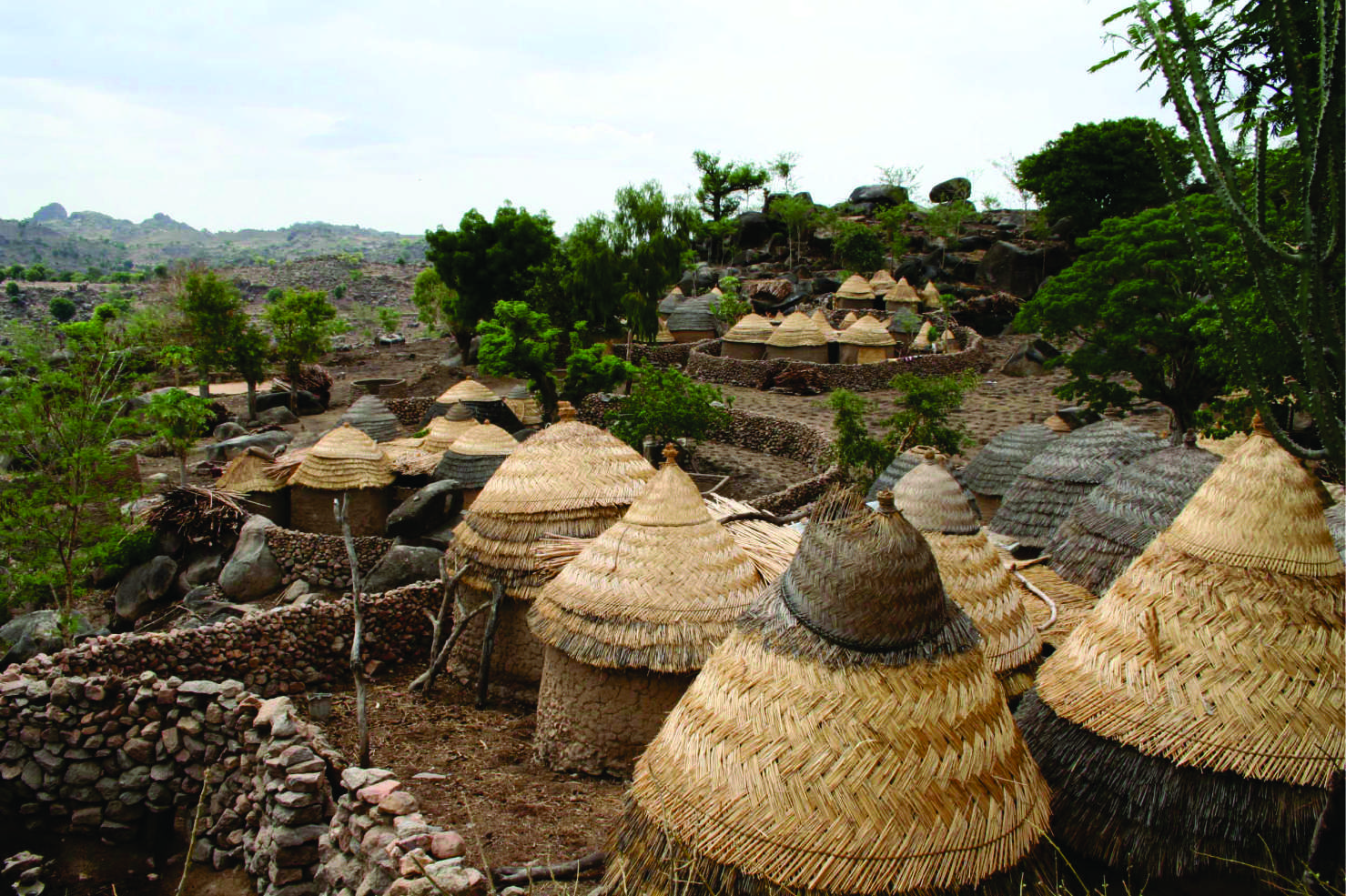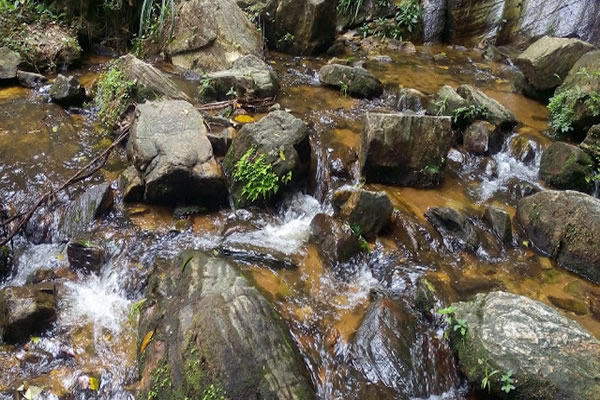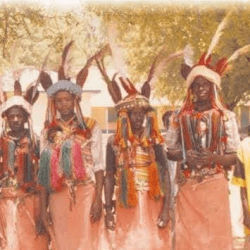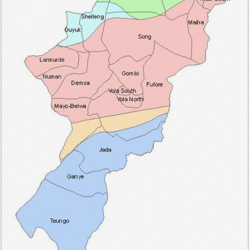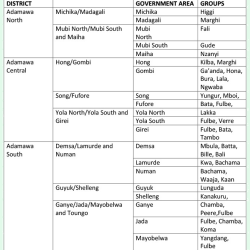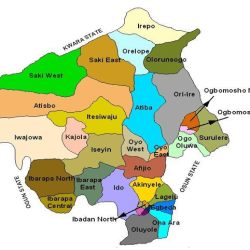Sukur is located in Madagali local government area of Adamawa state of Nigeria along Nigeria/ Cameroon border, some 290 km from Yola, the Adamawa state capital of north eastern Nigeria.
It is a hilltop settlement which stood at an elevation of 1045 m. The total land area covered by the site is 1942.50 ha with core zone having 764.40 ha and the buffer zone 1178.10 ha respectively.
Sukur is an ancient settlement with a recorded history of iron smelting technology, flourishing trade, and strong political institution dating back to the 16th century.
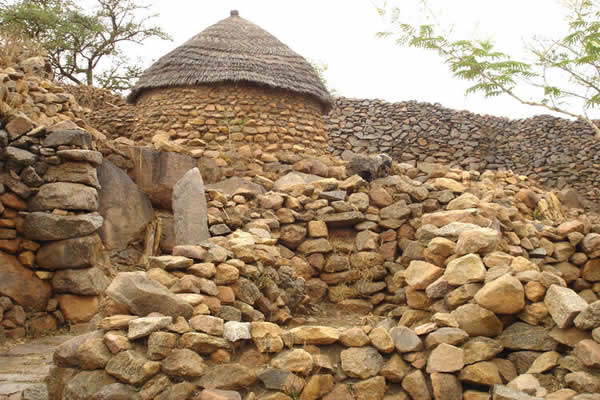
The landscape is characterized by terraces on the farmlands, dry stone structures and stone paved walkways.The terraced landscape at Sukur with its hierarchical structure and combination of intensive and extensive farming is remarkable. In addition, it has certain exceptional features that are not to be found elsewhere, notably the use of paved tracks and the spiritual content of the terraces, with their ritual features such as sacred trees.
The revered position of the Hidi as the political and spiritual head of the community is underscored by the magnificent dry stone architectural work of his palace, in and around which is a concentration of shrines, some ceramic. The villages situated on low lying ground below the Hidi Palace have their own characteristic indigenous architecture.
Among its features are dry stone walls, used as social markers and defensive enclosures, sunken animal (principally bull) pens, granaries, and threshing floors. Groups of mud walled thatched roofed houses are integrated by low stone walls. Of considerable social and economic importance are the wells.
These are below-ground structures surmounted by conical stone structures and surrounded by an enclosure wall. Within the compound are pens where domestic animals such as cattle and sheep are fattened, either for consumption by the family or for use as prestige and status symbols used in gift and marriage exchanges.
The remains of many disused iron-smelting furnaces can still be found. These shaft-type furnaces, blown with bellows, were usually sited close to the houses of their owners. Iron production involved complex socio-economic relationships and there was a considerable ritual associated with it.
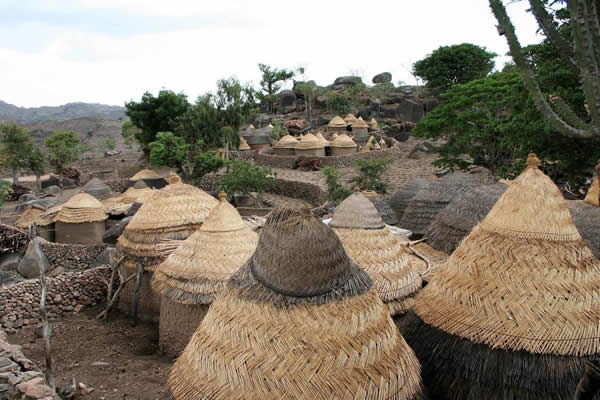
In Sukur kingdom is it made-up of 27 clans but only one clan has been ruling them for years now. At the kings places it is been decorated with title holder seat and waiting place for visitors all these are build with stones of various sizes. Also within the same confines there is some sort of a chalet for young, immature children, and mature men are not allowed to stay in the king’s palace.
According to Sukur tradition, only the first wife of the king prepares his food. The rest of his wives serve their duty as ordinary wives to the king. Furthermore, before contact with the West, the Sukur people were civilized in their own special way. They had their own locally made coin that they used within their community for the purpose of buying food and valuable items.
The coin is made-up of a substance found on the mountain which they melted and shaped in form of a circle. They also have a multipurpose hall where decisions and other issues are being discussed. It also serves as a court yard where punishment is meted out to offenders.
The guilty is tied up by the legs and left in a hole for days until he/she accepts his/her fault. Another form of punishment is that the guilty gets thrown into a hole which serves as a prison cell until the king and the king’s men have decided to let them out. It is only in the multipurpose hall that anybody in the community has the right to bare their mind, even to the king.
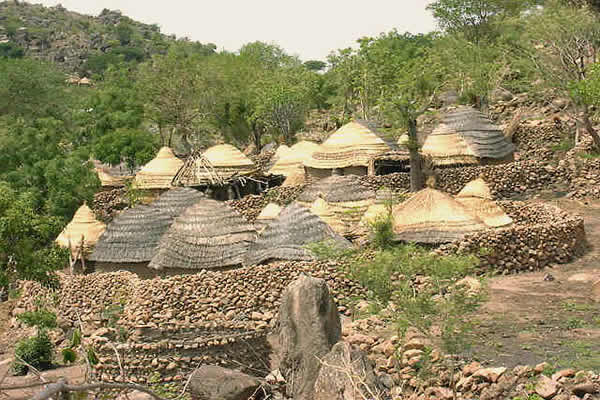
Finally, after touring the site, you don’t leave by the same gate you gained entrance to the palace–there is an exit. At the exit gate there is a forbidden stone. The stone is placed so that it separates the passage for ordinary people and that of the king. If anybody touches the stone, small rashes like chickenpox are believed to appear on the person’s body and are without cure unless a sacrifice is offered to the gods.
More astoundingly, they don’t have a specific deity that they call god but they believe that there is someone up in the sky that is special. The community is made up of mostly farmers, hunters and blacksmiths. They grow crops like millet, maize, rice and many others. But the mountain dwellers seem to be living a prehistoric life. They go about half-naked and very far from civilization.
